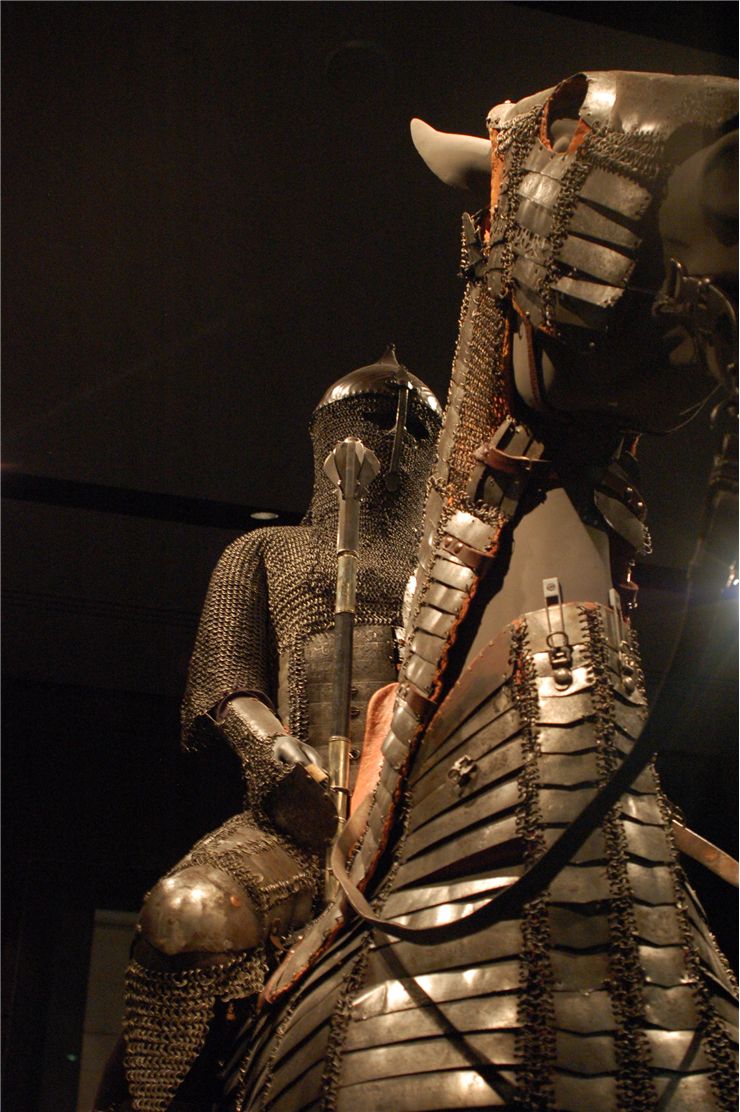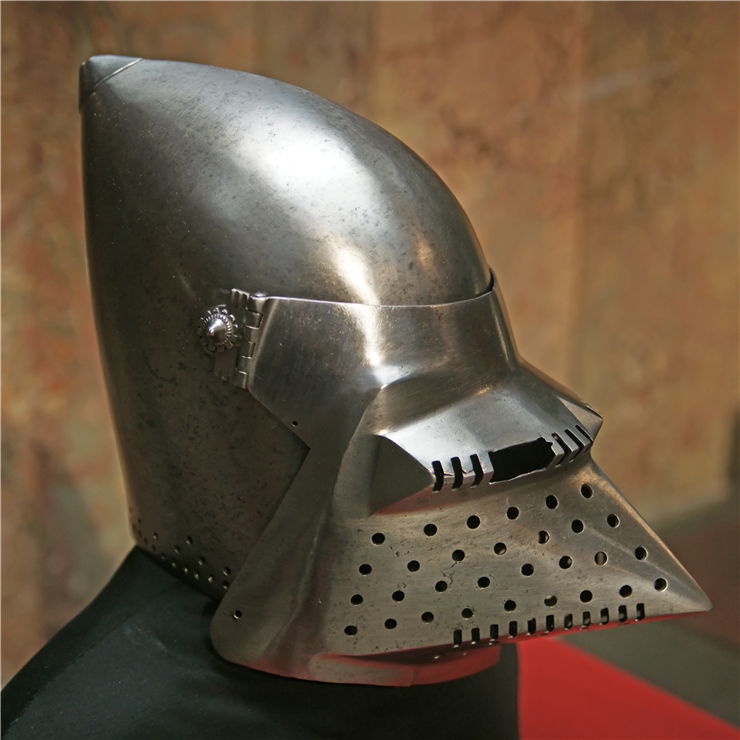History of Medieval Armor
Medieval Europe was turbulent time in which constant warfare and regular innovations brought more new examples personal armored protection than any other period of time before the introduction of gunpowder weapons. This period of time lasted between the fall of the Western Roman Empire in 5th century AD, during which armors evolved from Roman lorica segmentata and lorica squamata (segmented plate and scale armor) to the many forms of armor that eventually culminated in the adoption of full steel plate “suits of armor” that were very popular during late Medieval Age and Renaissance.
Reason why so many armor types were created and evolved in Europe can be contributed to several factors, most notably frequent warfare between many countries and expansion of metallurgy techniques that enabled blacksmiths and armorers to start implementing advanced ways of connecting armor pieces. This led to the quick expansions of armors such as brigandine, laminar armor, mail armor, plated mail, ring armor, scale armor, splinted armor, cuirass plated armors and mail hauberk which was made as finely interwoven mesh of small metal rings that was worn as an armored shirt below other types of armor.
Many other additional pieces armored gear were developed in concert with “core” armors, often being used to create specific armor sets that by the end of the Middle Ages culminated into full plate armor that covered soldiers (nobles or knights) into metal from their head to toe. This was possible with up to 20 individual pieces of armor, and even more if armored horses were evolved. Armored horses were protected with carefully molded steel plates that gave both horse and its rider better protection against spears, blade weapons and arrows.
Introduction and popularization of full plate armor had a profound effect on the warfare of entire Europe. Those armors evolved from the layered armors that were popular in 13th and 14th century, and with regular expansion of metal parts that soldier wore, full plate armors became highly popular during 15th and 16th century when history reported battles in which up to 10 thousand soldiers wore those expensive, hard to maintain and heavy armors. Their increased presence on the battlefield also forced rapid innovation in the field of weapons that were used to fight against them. Many types of spear, poll-axe and halberd weapons received significant upgrades, maces and hammers became more common because full plate armors were more susceptible to blunt damage, and powerful crossbows were eventually introduced as a permanent solution that could fight off full plated soldiers even at significant distances (one lucky crossbow shot from the Battle of Visby in 1361 pierced full plated knight at the distance of 220 meters). Fighting styles also changed a lot, forcing soldiers to adopt different approach when fighting full plated knights, focusing on damaging weak points of armors.
Eventually, arrival of gunpowder weapons impacted all forms of armor worn not only in Europe, but across entire world. This led to the almost complete abandonment of all armored protection gear from early 1700s to the World War 1 when only steel helmets became standardized and bulletproof vest were very rarely used.

